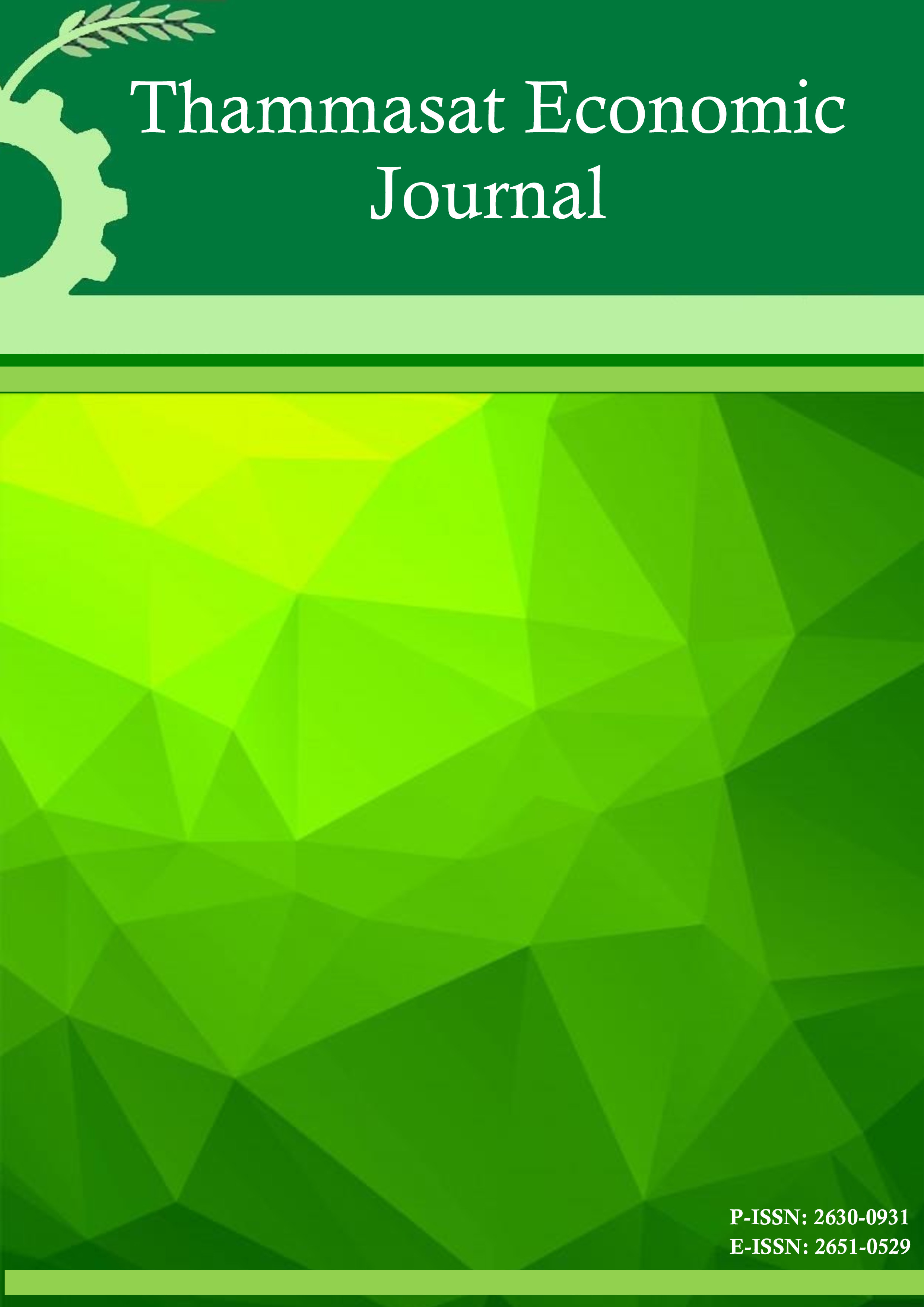Internet Usage in Thailand
Keywords:
Internet, Information and Communication Technology, Probit Analysis; Spill-over EffectAbstract
The internet is considered to be one of the information and communication technologies that have a significant impact on the development of individual capability and the economic growth of a country. This study aims to identify the factors that affect individuals’ decisions to use the internet and households’ decisions to connect to the internet in Thailand, by using the household survey data on ICT usage in 2009 from the National Statistic Office. Results from Probit models indicate that age, education, income, location of the household, and experience of using computers have significant impacts on individuals’ decisions to use the internet and households’ decisions to connect to the internet. More interestingly, children’ experiences of using the internet at schools, especially for children currently studying at a lower-secondary level and higher, have a significantly positive impact on households’ decisions to connect to the internet. For policy implications on promoting the internet usage among the population, these findings suggest that policy makers should pay attention and allocate more resources to disadvantage groups, such as uneducated and low income people living in the rural areas. In addition, policies that promote the internet usage in the schools should be continued because they not only help to improve students’ capability, but also have a spill-over effect on the other household members.
References
2.Chinn, Menzie D., & Fairlie, Robert W. (2010). ICT Use in the Developing World: An Analysis of Differences in Computer and Internet Penetration. Review of International Economics(18), 153-167.
3.Gillett, Sharon E., & Sirbu, Marvin A. (2006). Measuring the Economic Impact of Broadband Deployment. Final Report submitted to the US Department of Commerce, Economic Development Administration. Retrieved from http://cfp.mit.edu/publications/CFP_Papers/Measuring_bb_econ_impact-final.pdf
4.Greene, William H. (1997). Econometric Analysis (International ed.). Upper Saddle River, New Jersey: Prentice-Hall.
5.Greenstein, Shane, & McDevitt, Ryan C. (2009). The Broadband Bonus: Accounting for Broadband Internet's Impact on U.S. GDP. NBER Working Paper Series. Retrieved from http://www.nber.org/papers/w14758
6.Gujarati, Damodar N., & Porter, Dawn C. (2009). Basic Econometrics (5th ed.). Singapore: McGraw-Hill..
7.Holt, Lynne, & Jamison, Mark. (2009). Broadband and Contributions to Economic Growth:Lessons from the US experience. Telecommunications Policy, 33, 575-581.
8.Horrace, William C., & Oaxaca, Ronald L. (2006). Results on the Bias and Inconsistency of Ordinary Least Squares for the Linear Probability Model. Economics Letters (90), 321-327.
9.International Telecommunication Union. (2010). Year Book of Statistics: Telecommunication/ICT Indicators 2000-2009. Geneva, Switzerland.
10.International Telecommunication Union. (2010). Measuring the Information Society. Geneva, Switzerland.
11.International Telecommunication Union. (2011). Measuring the Information Society. Geneva, Switzerland.
12.Koutroumpis, Pantelis. (2009). The Economic Impact of Broadband on Growth: A Simultaneous Approach. Telecommunications Policy, 33, 471-485.
13.Madden, Gary, & Coble-Neal, Grant. (2003). Internet Use in Rural and Remote Western Australia. Telecommunications Policy, 27, 253-266.
14.Mitra, Sugata, & Rana, Vivek. (2001). Children and the Internet: Experiments with Minimally Invasive Education in India. The British Journal of Educational Technology, 32(2), 221-232.
15.Mocnick, Dijana, & Sirec, Karin. (2010). The Determinants of Internet Use Controlling for Income Level: Cross-country Empirical Evidence. Information Economics and Policy, 22, 243-256.
16.Norris, Pippa. (2001). Digital Divide: Civic Engagement, Information Poverty, and the Internet Worldwide: Cambridge University Press.
17.Qiang, Christine Z. (2009). Telecommunications and Economic Growth. World Bank, Washington DC.
18.Qiang, Christine Z., & Rossotto, Carlo M. (2009). Economic Impacts of Broadband Information and Communications for Development: Extending Research and Increasing Impact. Wachington DC.: The World Bank.
19.Rappoport, Paul N., Taylor, Lester D., Kridel, Donald, & Serad, William. (1998). The Demand for Internet and On-line Access. In Erik Bohlin & Standford L. Levin (Eds.), Telecommunications Transformation: Technology, Strategy and Policy. Amsterdam: IOS Press.
20.Tengtrakul, Pitikorn, & Peha, Jon M. (2010). Spill-over Effects of ICT Use in School to Thai Communities. Paper presented at the 38th Telecommunications Policy Research Conference.
21.Tengtrakul, Pitikorn, & Peha, Jon M. (2011). Access to and Penetration of ICT in Rural Thailand. Telecommunications Policy, 35, 141-155.
22.World Bank. World Development Indicators. Retrieved August 3, 2011 http://databank.worldbank.org/ddp/home.do










